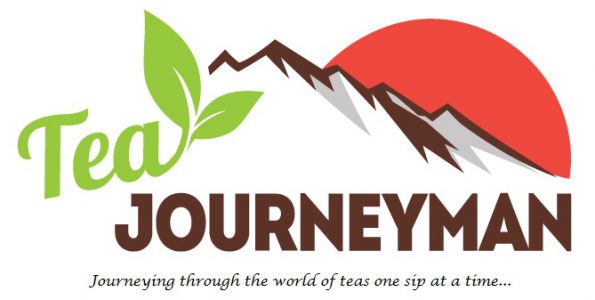Today’s review will focus on the Silk Tea from Araksa Tea Garden in Chiang Mai, Thailand. Although not specified as an oolong tea by Araksa Tea Garden, the leaves are definitely partially oxidized, and have undergone more processing than a white tea. Thus, for the purpose of reviewing the tea, and determining steeping guidelines, I have classified this as an oolong tea.
For more information on Araksa Tea Garden, check out my Company Spotlight post.
Let’s get to the review…
The dry leaves vary in color from pale dark green to pale light brown to pale dark brown, with some pale gold-yellow buds and silverish buds. The leaves consist almost entirely of unbroken, whole leaves and buds attached to stems, showing a range of plucking standards from one leaf and bud to three leaves and bud. There are a few detached, large leaf fragments. There is a generous amount of mature, large buds, and no totally bare stems. The leaves and buds are partially oxidized (as an estimate, maybe 30 to 40%), are very lightly hand rolled, and appear to have been pan fired. It is obvious that great care was put into shaping these leaves. The aroma has scents of toasted oats, light brown sugar, dried corn, and dried chrysanthemum flowers.
Eight grams of dry leaves were placed in an eighteen ounce (530 mL) cast iron tetsubin teapot, and infused with 190°F (88°C) water for 3:00 minutes.

The liquid has a bright, golden yellow color, perfectly clear and transparent. The aroma has interesting scents of chrysanthemum, sweet corn, and a touch of hay. The body is surprisingly full, will a silky, very smooth texture. There is no bitterness or astringency. The taste has notes of sweet corn, chrysanthemum, and hay. The aftertaste carries the hay and floral qualities, but with a subtle developing undertone of rose apples. There is lasting floral essence left on the breath.
The infused leaves vary slightly in the depth of the pale brown tones of color. The blend consists mostly of unbroken, whole leaves and buds attached to stems. There are a few large leaf fragments, detached from the stems, and no totally bare stems. The plucking standard varies from one leaf and mature bud to three leaves and mature bud. The largest buds measure nearly two inches (50 mm) long. Most of the buds this size are enveloping a younger bud. These are beautiful tea leaf specimens to observe. While hot, the leaves carry the aroma of chrysanthemum and corn. As they cool, the infused leaves hold a strong scent of magnolia flowers.
The Silk Tea from Araksa Tea Garden is a truly unique product. The leaves are beautiful to visually observe and handle in both the dry and infused forms. As mentioned above, it is obvious that the people at Araksa took incredible care of these leaves during production to not tear, detach, or otherwise damage the appearance. The taste is also unique, a blend of floral and corn notes. I cannot say I expected to find these characteristics in this tea, and although the combination was a challenge to understand and interpret at first, the final description seemed to come rather easily. The aroma of the cool, infused leaves is spectacular. It feels as if I stuck my nose into one of the large blooming magnolia flowers in the front of my house. Overall, this was a fascinating experience, and I would recommend this more to fellow tea enthusiasts who can appreciate the specific qualities offered by this tea.
Thanks again to the management at Araksa Tea Garden for providing this sample of Silk Tea. Keep up the interesting and innovative work! Cheers!












































